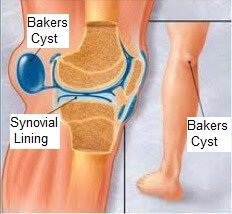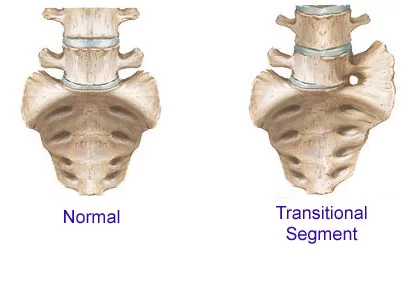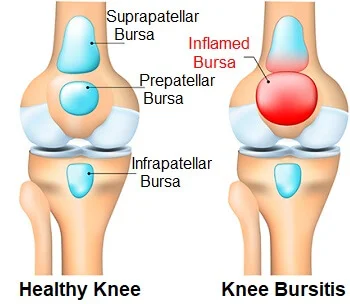Are Physical therapist a Doctors?
A physical therapist helps you improve your movement, mobility, and function. A physical therapist can do this through various exercises, stretches, or other physical activities.
For example, someone who has undergone knee replacement surgery may see a physical therapist as part of their recovery.
A physical therapist will work with the patient to help strengthen the knee and increase the range of motion in the knee joint. This may help them move more easily with less discomfort and pain.
It mostly depends on the PT. Not all physical therapists (PTs) have a doctorate (DPT). Some PTs only have a bachelor’s degree, while others have a master’s degree in physical therapy (MSPT).
This is because, before the mid-1990s, all physical therapists had either a bachelor’s or a master’s degree. After the first DPT degree was issued in 1996, master’s degrees continued to be offered until the early 2000s, but have since been phased out, as have bachelor’s degrees.
This means that if you want to become a physical therapist, you must complete a doctoral program approved by the Commission on Accreditation in Physical Therapy Education, or CAPTE.
However, there are still thousands of senior PTs with bachelor’s and master’s degrees working in clinics across the country. To answer your question, a Physical Therapist is not necessarily a doctor – as not all PTs have a doctorate (DPT).
Table of Contents
Is DPT considered a doctor?
Technically the answer is yes after completion of the 3 year Doctoral Program in Physical Therapy entitles you to use the title “Dr.” with your name.
And while a DPT might be considered a “doctor,” so can many other healthcare professionals: for example, chiropractors who complete 3 years of graduate school, or audiologists who earn their doctorate in a 3-4 year AUD program. Heck, getting a Phd in Nursing makes you a Doctor of Nursing, though I don’t know how that would work with an introduction: “Hi, I’m Doctor of Nursing Tim”—or is it Dr. Nurse? Talk about confusion.
It is really important not to think that a health care provider with the title “Dr.” is a medical doctor (MD). My 3 year DPT degree is not equivalent to a 4 year medical degree (MD) which requires a minimum of 3 years of additional internship.
So how do you know if “Dr. So-and-so’, is the person you’re talking to a doctor?
In short, you don’t know one way or the other if the provider doesn’t qualify what kind of doctorate they have.
What does a physical therapist do?
Now that we’ve discussed the differences and similarities between PTs and OTs, let’s take a closer look at what a physical therapist does.
What are the goals of physical therapy?
The overall objectives of PT focus on:
- restoring movement or improving, strength and range of motion
- decreasing pain
- prevent your condition from worsening
- will teach you ways to maintain overall fitness and functionality
When is physical therapy necessary?
Physical Therapy is mostly recommended when a condition affects your movement or range of motion. PT can be used for:
- improving mobility after injury
- recovery after surgery
- pain management
- joint conditions such as ankylosing spondylitis, osteoarthritis and rheumatoid arthritis
- neurological conditions, including multiple sclerosis, Parkinson’s disease and stroke recovery
- hand conditions such as trigger finger and carpal tunnel syndrome
- leakage of urine
- lung conditions such as chronic obstructive pulmonary disease (COPD) and cystic fibrosis
- heart disease such as heart failure and recovery from a heart attack
- cancer
What type of therapy can you expect?
The type of therapy you receive will be structured to your specific needs. A physical therapist will carefully review your medical history and current health to create a plan and goals for your therapy.
Physical therapists uses a variety of techniques that includes:
- targeted exercises
- hot and cold applications
- massage
- stretching
- hand manipulation
- electrical stimulation
- ultrasound
Where can you get physical therapy?
Physiotherapists work in a variety of places, including but not limited to:
- ambulance or authorities
- home health agencies
- inpatient facilities such as nursing homes and hospitals schools
- fitness centers
Yes a Doctor of Physical Therapy is a doctor
Because of a common misunderstanding about the difference between a doctor and a medical professional with a doctorate, you’ll often be asked, “Is a doctor of physical therapy a doctor?” Physical therapist is not an MD instead they earn a DPT. But that doesn’t mean they aren’t doctors,” or that they lack the proper training and credentialing to practice their medical specialty safely and effectively. Exactly opposite.
In 2011, an article in the New York Times noted that doctors reflected on other medical professionals with doctorates who used the term “physician”. They note that they have not had the same training and clinical experience as doctors. To address this issue: “It is important to provide accurate information to consumers. The association provides clear guidelines for physical therapists regarding the use of the title ‘doctor.’ The guidance states that physical therapists in all clinical settings who hold a Doctor of Physical Therapy (DPT) degree must state that they are physical therapists when using the title “Doctor” or “Doctor” and will use the titles in accordance with jurisdictional law.”
Doctorate is required to become a PT
As mentioned, with the new APTA rule now in effect, the only way to become a physical therapist is to earn a doctorate, which is required before you are allowed to take the National Physical Therapist Examination (NPTE) (which you must pass all PTs). ) and then your state licensing exam. Some Physical Therapists also choose to be board certified.
Why a Doctorate in Physical Therapy
The field of physical therapy is expanding rapidly and the salaries are quite good, making it one of the best degrees in healthcare. The Bureau of Labor Statistics predicts that PT jobs will grow by 18 percent by 2029, four times the growth rate of the overall labor market.
Physical Therapists Work
According to the APTA, physical therapists are “movement specialists” who may choose to focus on specific populations, such as children or older adults, or individuals who have a disability, injury, or illness. Overall, their job is to help patients “restore functionality by improving movement. and increasing range of motion in specific areas of the body,” manage pain and improve their quality of life.
Physiotherapists practicing in:
- Hospital
- Neurological centers
- Rehabilitation centers
- School and university health centers
- Nursing homes
- Pediatrician’s office
- Private practice
- Sport equipment
- Women’s health clinics
Which Bachelor Degree Do You Need to Become a Physical Therapist?
According to Indeed, a number of bachelor’s degrees will prepare you for the DPT curriculum. These degrees will usually help you complete the necessary coursework for your DPT.
The most common/useful bachelor’s degrees for anyone seeking a DPT include:
- Anatomy
- Physiology
- Biology
- Chemistry
- Exercise science
- Electrotheraapy
- Bio-mechaanics
- Health Sciences
- Pharmacology
- Statistics
What is a DPT degree?
The Doctor of Physical Therapy is a comprehensive, hands-on doctoral program required of all practicing PT specialists. It involves clinical practice and rigorous coursework over the course of two or three years.
In addition to coursework, the DPT program provides comprehensive clinical education. Students learn intensively in the classroom, but also take extensive observation and practice classes. Students study the musculoskeletal, cardiovascular, pulmonary, and metabolic systems as well as a long list of health science topics.
DPT programs prepare students to pass the National Physical Therapy Examination for licensure upon graduation. However, today’s top programs look beyond the physical therapist’s basic anatomical and clinical applications. For example, Alabama State University’s program trains its students to:
- Recognize and understand the role of the PT specialist for all patients in a diverse healthcare environment
- Train lifelong learners to become clinicians who change with expanding PT science
- Promote evidence-based practice to promote wellness and health in community
Curriculum
The DPT course covers everything from pediatric to geriatric care in a range of specialties. Students begin with basic science courses and expand into topics specific to their chosen field. The courses are focused on:
- Acute injury
- Anatomy
- Auxiliary devices
- Differential diagnosis
- Walking training
- Display
- Kinesiology
- Human disease
- Neurological disorders
- Patient care and management
- Pharmacology
On-campus vs. hybrid format
In general, school-based and hybrid PT programs share many components. Both programs require a full-time schedule. Students in the hybrid program gain access to the same courses offered in the classroom but have the choice to take many of them through either synchronous or asynchronous online learning.
In colleges, students travel to campus twice during each of the first five semesters to immerse themselves in the lab.
Duration of DPT?
Most DPT programs take two to three years to complete. The last one or two semesters of your coursework include a professional immersion mirroring experience working as a PT specialist.
Admission requirements
Students no longer need to have a master’s degree to be considered for the DPT program.
Typical admission requirements include:
- Bachelor’s degree from an accredited university
- Admissions Essay/Personal Statement
- Professional experience in PT or occupational therapy
- GRE score (depending on the program)
- Letters of recommendation
- Minimum college GPA
- Prerequisite courses in relevant sciences
How to choose Doctor of Physical Therapy Program
In addition to meeting the high accreditation standards set forth by the Commission on Accreditation in Physical Therapy Education (CAPTE), the best Doctor of Physical Therapy programs should offer:
- Low teacher-to-student ratio
- Access to experts in the field of physical therapy
- Hybrid and personal program flexibility
- Special tracks and electives
- State-of-the-art facility for clinical training
- Links to top employers/high employment rates after graduation
Additionally, if you are interested in using your degree to address barriers to access, many DPT programs seek to alleviate inequities in physical therapy care and the medical field in general as a part of their education.







